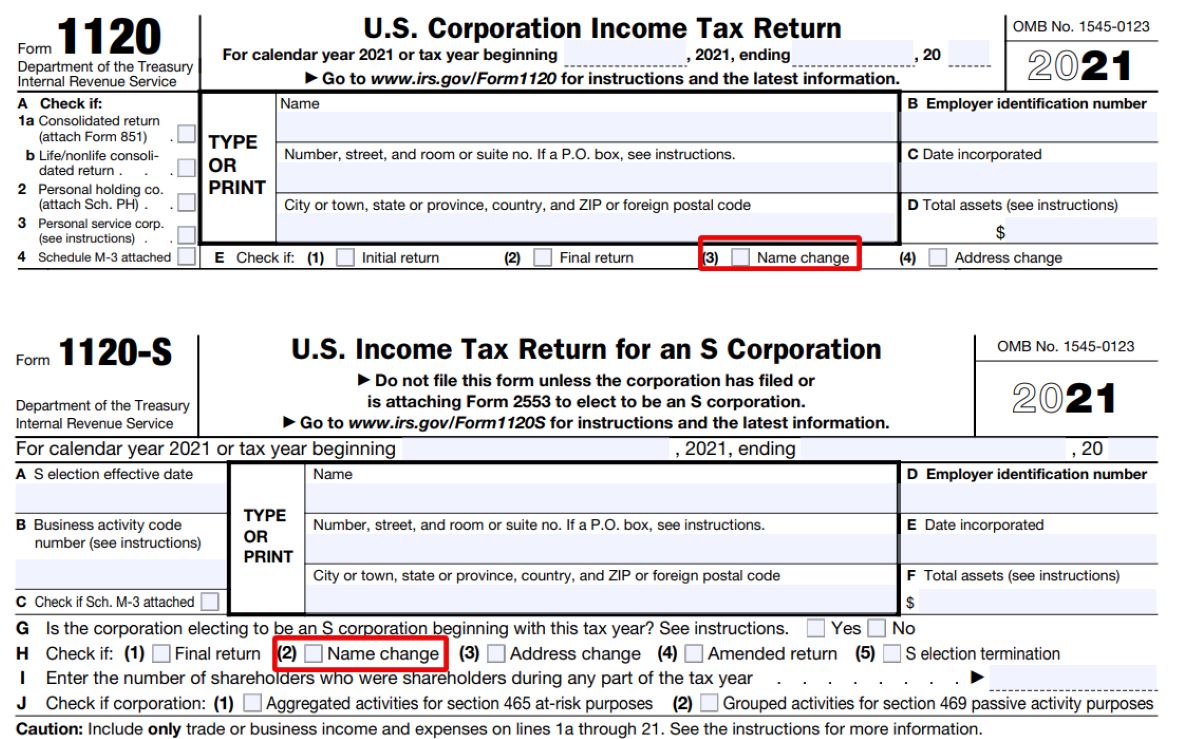

Finance
How To Change My Name On My Health Insurance
Modified: December 30, 2023
Learn how to change your name on your health insurance plan with these simple finance tips. Take control of your personal information and ensure accurate coverage.
(Many of the links in this article redirect to a specific reviewed product. Your purchase of these products through affiliate links helps to generate commission for LiveWell, at no extra cost. Learn more)
Table of Contents
- Introduction
- Step 1: Review your health insurance policy
- Step 2: Gather the necessary documents
- Step 3: Contact your health insurance provider
- Step 4: Submit the required paperwork
- Step 5: Follow up on your name change request
- Step 6: Update your name on other related documents
- Step 7: Keep a record of the process
- Conclusion
Introduction
Changing your name on your health insurance policy may be necessary for various reasons, such as marriage, divorce, or simply deciding to go by a different name. Whatever the case may be, it’s important to ensure that your health insurance information accurately reflects your current legal name. This can help avoid any confusion or potential issues when it comes to claims processing and accessing your healthcare benefits.
In this article, we will guide you through the process of changing your name on your health insurance. Please keep in mind that the specific steps may vary depending on your health insurance provider and the type of plan you have. It’s always a good idea to contact your health insurance provider directly to get the most accurate and up-to-date information for your specific situation.
While the process of changing your name on your health insurance may seem daunting at first, with the right information and guidance, it can be a relatively straightforward process. By following the steps outlined in this article, you’ll be well on your way to updating your name and ensuring that your health insurance information is accurate and up to date.
Now, let’s dive into the step-by-step process of changing your name on your health insurance policy.
Step 1: Review your health insurance policy
Before initiating the process of changing your name on your health insurance policy, it’s important to review your current policy to understand any specific requirements or procedures outlined by your insurance provider. This will help you prepare for the name change process and ensure that you have all the necessary information and documents on hand.
Start by locating your health insurance policy documents, either in print or digital format. Read through the policy carefully, paying particular attention to sections related to updating personal information. Look for any specific instructions or guidelines pertaining to changing your name.
If you’re unable to find your policy documents, don’t worry. You can typically access your policy information online through your insurance provider’s website or by contacting their customer service department.
During the review process, take note of any additional requirements or documents that may be requested by your insurance provider. This could include a copy of your marriage certificate, divorce decree, court order, or other legal documentation supporting the name change. Understanding these requirements beforehand will save you time and ensure a smooth transition during the name change process.
It’s also a good idea to make note of any specific deadlines or timeframes mentioned in your policy. Some insurance providers may have specific timeframes within which you need to notify them of a name change. Adhering to these deadlines will help prevent any disruptions in your coverage or claims processing.
By thoroughly reviewing your health insurance policy and familiarizing yourself with the requirements and procedures, you’ll be well-prepared to move on to the next steps of changing your name on your health insurance policy.
Step 2: Gather the necessary documents
Once you have reviewed your health insurance policy and identified the requirements for changing your name, the next step is to gather the necessary documents. The specific documents needed may vary depending on your insurance provider and the reason for the name change.
Common documents that may be required include:
- Your updated government-issued identification (such as a driver’s license, passport, or social security card) reflecting your new name.
- Proof of the name change event, such as a marriage certificate, divorce decree, or court order.
- Copies of any legal documentation supporting the name change.
It’s important to obtain certified copies or official documents, as insurance companies usually do not accept photocopies or unofficial records. Check with your insurance provider to confirm the specific document requirements and whether they need to be notarized or certified.
Additionally, it’s a good idea to make copies of all the documents you gather for your records. This can serve as a backup in case of any unforeseen circumstances or document misplacement.
If you’re unsure about which documents are required or need assistance in obtaining them, reach out to your health insurance provider’s customer service department. They can provide guidance and clarify any questions you may have regarding the documentation needed for the name change process.
Once you have gathered and organized all the necessary documents, you’ll be ready to proceed to the next step of contacting your health insurance provider to initiate the name change process.
Step 3: Contact your health insurance provider
After gathering all the necessary documents, the next step in changing your name on your health insurance policy is to contact your insurance provider. You can typically do this by calling their customer service department or through their online portal, if available.
When contacting your health insurance provider, be prepared to provide the following information:
- Your policy number: This can usually be found on your insurance card or within your policy documents.
- Your current legal name and contact information.
- The reason for the name change (marriage, divorce, or personal preference).
- The effective date you would like the name change to take effect.
During the call or communication with your insurance provider, explain that you need to update your name on your health insurance policy. They will guide you through the necessary steps and provide you with any specific instructions or forms that need to be completed.
It’s important to remain patient and flexible during this process, as it may require multiple interactions with your insurance provider to complete the name change. Be prepared to provide any additional documentation or information that they may request.
If you encounter any challenges or difficulties during this step, remain persistent and document your interactions with the insurance provider. This will help you have a record of your communication and any instructions or promises made along the way.
Once you have contacted your health insurance provider and initiated the name change process, you’re well on your way to updating your information on the policy. The next step will involve submitting the required paperwork, which we will explore in the next section.
Step 4: Submit the required paperwork
After contacting your health insurance provider and initiating the name change process, the next step is to submit the required paperwork. Your insurance provider will provide you with any necessary forms or instructions for completing the name change.
Read through the forms carefully to ensure that you understand the information requested and how to properly fill them out. Double-check that you have all the required documents and information before submitting your paperwork to avoid any delays or complications.
Some common documents and forms that may be required for the name change include:
- Name Change Request Form: This form will typically ask for your policy number, previous name, new name, effective date of the change, and any supporting documentation that confirms the name change event.
- Copies of Legal Documentation: This may include a marriage certificate, divorce decree, or court order indicating the name change.
- Updated Identification: Include a photocopy of your updated government-issued identification reflecting your new name.
Ensure that all the documents are filled out accurately and legibly. If you have any questions or need assistance in completing the forms, don’t hesitate to reach out to your insurance provider’s customer service department for guidance.
Once you have completed the required paperwork and compiled all the necessary documents, submit them to your health insurance provider as instructed. Some insurance providers may allow online submission, while others may require you to mail or fax the documents.
Keep copies of all the paperwork and forms you submit, along with any proof of delivery or confirmation from your insurance provider. This will serve as a record of your submission and can be useful in case there are any issues or discrepancies in the future.
Once the required paperwork has been submitted, you will proceed to the next step of following up on your name change request.
Step 5: Follow up on your name change request
After submitting the required paperwork to your health insurance provider for your name change, it’s important to follow up to ensure that the process is progressing smoothly. While the exact timeframe for processing the name change may vary, it’s advisable to check in with your insurance provider periodically for updates.
Consider the following steps when following up on your name change request:
- Confirmation: Upon submitting your paperwork, request confirmation from your insurance provider that they have received the documents. This will give you peace of mind and help you keep track of the progress.
- Timeline: Inquire about the estimated timeframe for processing the name change. While some insurance providers may be able to provide a specific timeline, others may require additional time for verification and processing.
- Updates: Stay proactive by contacting your insurance provider regularly for status updates. Be prepared to provide any additional information or documentation they may request during this time.
- Documentation: Keep records of your conversations and any correspondence with your insurance provider regarding your name change request. This will serve as a reference point in case of any discrepancies or delays.
- Escalation: If you encounter any significant delays or difficulties in the process, escalate the issue to a supervisor or higher-level representative. They may be able to assist in expediting your request.
By staying engaged and following up regularly, you can ensure that your name change request is being processed in a timely manner. Remember to remain patient and understanding throughout the process, as some insurance providers may have specific procedures or verification steps in place.
Once your name change request has been processed and approved by your health insurance provider, it’s crucial to update your name on other related documents as well. We will explore this in the next step.
Step 6: Update your name on other related documents
After successfully changing your name on your health insurance policy, it’s important to update your name on other related documents to ensure consistency and avoid any confusion. Here are some key documents you may need to update:
- Identification Documents: Update your name on your driver’s license or state ID card, passport, social security card, and any other government-issued identification. Contact the respective authorities or visit their websites to understand the process and requirements for updating your name.
- Employer Records: Inform your employer of your name change so that they can update their records, including your employee files, payroll information, and benefits documentation. Provide them with the necessary legal documentation as evidence of the name change.
- Financial Institutions: Contact your bank, credit card companies, and other financial institutions to update your name on your accounts, credit cards, loans, and any other financial documents. They may require legal documentation supporting the name change.
- Legal Documents: Review your will, trusts, power of attorney, and any other legal documents where your previous name is mentioned. Consult an attorney if necessary to update these documents accordingly.
- Other Insurance Policies: Check your other insurance policies, such as auto insurance or homeowners insurance, and notify the respective insurance companies of your name change.
- Medical Professionals: Inform your primary care physician, specialists, and any other healthcare providers about your name change so that they can update your records accordingly.
Remember to gather the necessary documentation and follow the specific procedures outlined by each institution or organization. It is advisable to keep a record of all the documents and correspondence related to the name change process for future reference.
Updating your name on these related documents will help ensure consistency across your records, avoid any potential complications, and make sure that your new name is accurately reflected in all areas of your life.
Finally, once you have completed the necessary updates, it’s important to keep a record of the entire name change process. This will help you keep track of when and how you updated your name on various documents, ensuring that nothing falls through the cracks.
Step 7: Keep a record of the process
Throughout the process of changing your name on your health insurance policy and updating it on other related documents, it’s essential to keep a detailed record of the entire process. This will serve as a reference point and provide documentation in case any issues or discrepancies arise in the future. Here are some key steps to follow:
- Document the Dates: Record the dates when you initiated the name change process with your health insurance provider, submitted the required paperwork, and followed up on the progress. This information will help you track the timeline and ensure timely updates.
- Save Copies: Keep copies of all documentation related to your name change, including forms, supporting legal documents, and any correspondence you have with your insurance provider or other institutions. Organize these copies in a safe and easily accessible place.
- Take Notes: Make notes of any phone conversations or in-person discussions regarding your name change. Include the date, time, names of the representatives you spoke with, and a summary of the conversation. These notes can be crucial if any discrepancies or issues arise later on.
- Track Confirmation Numbers: If you receive confirmation numbers or reference numbers during the name change process, make sure to record them. These numbers serve as proof of your interactions and can be helpful for reference purposes.
- Stay Organized: Maintain a file or folder specifically dedicated to your name change process. Keep all relevant documents, notes, and receipts in this file for easy reference.
By keeping a thorough record of the entire name change process, you can confidently address any potential challenges or discrepancies that may arise in the future. It also provides you with a sense of security, knowing that you have documented evidence of your efforts to update your name on your health insurance policy and related documents.
Remember to store this record in a safe and accessible place, keeping it for future reference as needed. This will help ensure a smooth transition and prevent any complications that may arise from outdated or incorrect information.
Congratulations on successfully changing your name on your health insurance policy. By following these steps and keeping a record of the process, you have taken an important step towards aligning your personal information and ensuring the accuracy of your health insurance coverage.
Conclusion
Changing your name on your health insurance policy may seem daunting at first, but with the right information and guidance, it can be a relatively straightforward process. By following the steps outlined in this article, you can ensure that your health insurance information accurately reflects your current legal name.
Remember to review your health insurance policy to understand any specific requirements or procedures outlined by your insurance provider. Gather all the necessary documents, including proof of the name change event and updated identification. Then, contact your health insurance provider to initiate the name change process and submit the required paperwork.
Throughout the process, follow up with your insurance provider regularly to track the progress of your name change request. Additionally, be sure to update your name on other related documents such as your identification, employer records, financial institutions, and legal documents.
Finally, keep a detailed record of the entire name change process, including dates, copies of documentation, notes on conversations, and any confirmation numbers received. This record will serve as a valuable reference in the future and provide documentation of your efforts to update your name.
Remember that each insurance provider and situation may have slightly different requirements and procedures, so it’s always a good idea to contact your health insurance provider directly for the most accurate and up-to-date information.
By successfully changing your name on your health insurance policy and updating it on other related documents, you can ensure consistency and avoid any potential issues or confusion. This will help streamline the claims processing and access to your healthcare benefits under your new legal name.
Congratulations on taking this important step towards aligning your personal information. Now, you can proceed with confidence, knowing that your health insurance reflects your current legal name.














